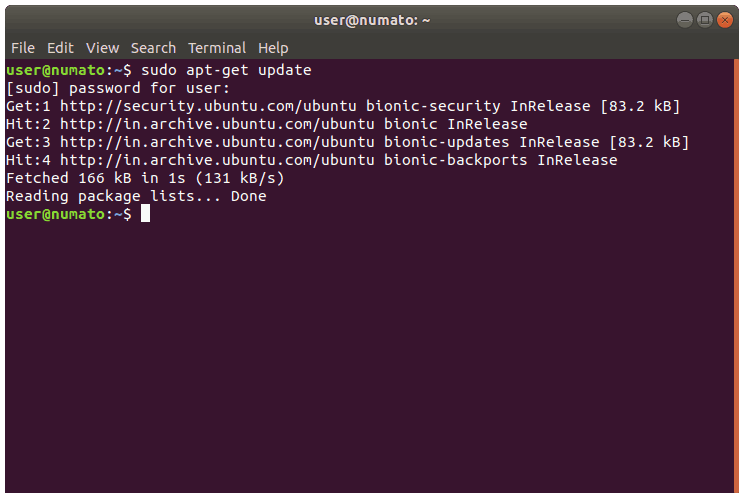

If the mount command completes without errors, you can do "df" to see the filesystem mounted. Your command above mixes CIFS and NFS formatting and won't work. The mount command is intelligent enough to determine the protocol to use based on the format of the path given in the command line. When the mount completes, files in /mnt/vol1/nfsfiles on the server will appear in /files/nfsshare on the client. (eg /mnt/vol1/nfsfiles, which is the kind of path I'd expect to see for a FreeNAS nfs share.) the second part is the local path where the NFS mountpoint should be attached. The first part is the server and the path to the shared location on the server.
Xeoma ubuntu install software#
Once you have the NFS client software installed and running, you'll need to make sure the local directory exists for the mountpoint.įor instance, if I want my NFS share accessible at /files/nfsshare, I would make sure the directory exists on my Ubuntu client and then issue the following command as root: Jails: running 1 iocage jail (Plex) using danb35's script:Īdditional NIC: MELLANOX 10GB CONNECTX2 - MNPA19-XTR Take a look here: A post with Links to useful threadsĭepending on what version of Ubuntu you installed (client, server, etc) you may not actually have the packages installed for Ubuntu to operate as an NFS or CIFS client. Vdev-1 = 4 x 6 TB drives in RAID-z1 (4 WD Gold drives - WD6002FRYZ)īoot pool: 1 vdev with 2 x 40 GB notebook drives in mirror (2 drives total - FUJITSU MHW2040BS) Vdev-0 = 4 x 6 TB drives in RAID-z1 (4 WD Gold drives - WD6002FRYZ) Vdev-1 = 6 x 4 TB drives in RAID-z2 (6 Seagate Exos drives - ST4000NM0115) Vdev-0 = 6 x 4 TB drives in RAID-z2 (6 Seagate Exos drives - ST4000NM0115) Vdev-1 = 6 x 4 TB drives in RAID-z2 (6 Seagate Desktop drives - ST4000DM000-1F2168) Vdev-0 = 6 x 4 TB drives in RAID-z2 (6 Seagate Desktop drives - ST4000DM000-1F2168) HBA: LSI/Broadcom SAS9207-8i, 6Gbps SAS PCI-E 3.0 HBA - flashed to IT Firmware: 20.00.07.00Ĭonnected to: two 6Gb/s 24-port 3.5" mini-SAS expander backplanes (80H10024001A0) 128 GB of 16GB sticks Samsung brand PC3-12800R, DDR3 Registered ECC Processor: Intel Xeon E5-2650 V2, 2.6GHz 8 Core (16 thread) System board: SuperMicro Motherboard X9SRL-F, LGA 2011/Socket R, IPMI For a home NAS, this chassis is huge, able to hold 48 data drives and two boot drives with a couple spaces internally for non-hot-swap drives. The three pools in this one system represent the three NAS systems I had before the consolidation. I have even put together some hardware just to test things out a time or two.įor a while I had three systems, all at once, at home but I am making some hardware changes right now and only one NAS is online. I made some mistakes along the way, learned some and I try to share some of those lessons learned experiences here in the forum. This is the 8th FreeNAS unit I have built for home. This one was built in 2018, but I reused the name from a previous build.


 0 kommentar(er)
0 kommentar(er)
